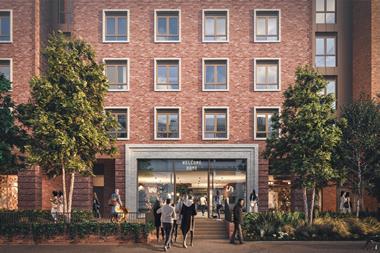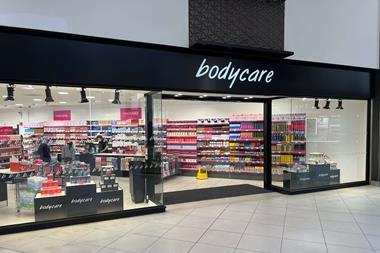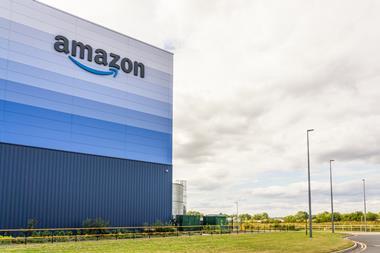Outlet centres must have seemed like a very good idea at one time. As brands produced ever greater quantities of goods bearing logos and labels – not all of which sold at first showing – here was a means of getting shot of excess inventory. The premise was simple. If you offered shoppers the chance to snap up branded merchandise at a substantial discount to the original selling price within convivial surroundings, the money would come flooding in.
And so it went. Following a model initially established in the US, operators such as McArthur Glen and Freeport began opening schemes across the UK that shoppers would drive to for a day out: one where they could eat, drink and do some serious shopping. Much of the development that took place was based on the notion that shoppers would drive for up to an hour providing there was more to the outlet centre than simply the straightforward acquisition of off-price merchandise. There had to be an appropriate mix of leisure and retail – or so the mantra went.
However, few would have foreseen the rise of the value retailer in the mid to late 1990s – a phenomenon that would see names such as TK Maxx and Primark invading high streets and edge-of-town retail parks across the UK. This form of retailing offered bargain-basement prices and, in the case of TK Maxx, branded stock. To the casual observer, it might have seemed as if the outlet centre game was up.
And yet, as the end of the first decade of the 21st century draws nearer, there are still a large number of outlet schemes in the UK and most operators still seem pretty bullish about their future prospects. Either something has gone right for outlet centre owners or they are closing their eyes to the threat posed by value retailers and their ilk.
There is also the matter of what constitutes an outlet centre in the present retail climate. There are still a fair number of what might be termed classic outlet centres in the UK – those that are well away from high streets and town centres, with ample parking and a range of activities and brands in situ, aimed at parting shoppers from their money in a leisurely manner. Most of these are well established; there have been virtually no new outlet centres in the past two years.
The exception to this is Ireland, where new schemes have come out of the ground in the North and in the Republic. Phil Cottingham, portfolio director, retail, at Land Securities – which operates Hatfield Galleria and Portsmouth’s Gunwharf Quays, among others – admits that the UK outlet centre sector is approaching saturation. However, he feels that there is still business to be done. “There are more than 40 schemes in the UK. But there remain opportunities to add value and make more of what’s there,” he says.
He adds that, while all of these schemes are called outlet centres, there are many different types and it is as important for operators to demonstrate a “point of view” as it is for shopping centre owners.
Not so far out
Gunwharf Quays is a case in point. It may have 95 designer outlets and a large number of bars and restaurants, but it also happens to break the outlet centre mould by being just a few minutes from the city centre rather than located in the countryside.Nonetheless, it fits the pattern in most other respects, with a dedicated building where brands sell discounted merchandise. Cottingham makes the point that the term outlet centre may mean different things to different people, but that the principles involved are the same.
Gunwharf Quays is 13 minutes drive away from Fareham (according to the AA’s Route Planner) and home to a branch of TK Maxx. Not far for brand-hunters to go, then, if they are merely seeking a low-priced, branded alternative to the outlet centre offer. But Cottingham insists that this is to miss the point. “Of course, you will get people who want to shop at Primark or TK Maxx but, equally, there are those who may want a premium brand for a reasonable price. Where are you going to go?” The implication, in case it isn’t clear, is that you will hotfoot it to the nearest outlet centre – and many still do.
Scott Malkin, chairman of outlet centre owner and developer ValueRetail, which has centres across the continent and runs the upscale Bicester Village in this country, notes: “TK Maxx has been around for a long time and has co-existed alongside the outlet sector for 20 to 25 years.”
He claims that, when brand owners choose to sell via TK Maxx, they “lose control of their brand”. He adds: “For brands, outlet centres are about controlling the environment that merchandise is sold in. Value retailing and outlet centres work alongside each other.”
Malkin is also sanguine about Primark as a threat. “Somebody who wants to buy last year’s sportswear at half price in an outlet centre is prepared to pay five to six times what a garment will cost in Primark. The Primark customer is loyal to the Primark brand only,” he says.
Not everyone follows this line of thinking, however. Chris Green, head of marketing communications at outlet centre developer McArthurGlen, says that value retailers need to be taken seriously. “They certainly are our competition and we would be very foolish not to recognise this,” he says. “We also have to understand that, culturally, we are being encouraged to find a look for less.”
Cottingham makes the point that shopping centres and outlet centres are very different propositions from a brand owner’s and investor’s perspective. “Leases in outlet centres are short term and they offer brand owners the chance to get their brands out there. Contrast this with shopping centres, where leases are longer and shopping visits take place with greater frequency and a shorter drive time.”
The outlet centre model is clearly different and, if Cottingham is right, the reasons for visiting an outlet centre are also different. However, this does not mean that the sector can exist in splendid isolation from other forms of retailing or that a mature sector has reached the end of its natural life in terms of growth.
Across the Irish Sea, Junction One and The Outlet at Bridgewater Park, both in the North, are relative newcomers in a market that continues to expand and where developers seem to expect ever more takers for the outlet format. Yet, even here, the rise of value retailing has not gone unnoticed.
John Drummond, managing director of Guinea Group, which developed Junction One, says: “Outlet centre operators have had to sharpen their act.” He says that one of the outcomes of the rise of value retail is that outlet operators are getting more stock more often, principally because the shelf life of branded goods in full-price retail is shortening. He adds that there have also been improvements in the ambience of all outlet centres, offering shoppers another reason to stay loyal.
Jo Skilton, commercial director at GML estates – owner of The Outlet, which opened this year – takes a pragmatic view. “I think that any retail exists because there is a demand for it,” she says. “Everybody in the industry would probably say that the best sites have now been had. So developers will concentrate on developing the bigger sites and the smaller ones will fade away.”
This last comment is something that almost everyone in the business is agreed upon. Value retailing may or may not be having an impact on outlet centres in the UK but, ultimately, there are probably too many schemes. Although short-term turnover-based leases leave more room for manoeuvre from a tenant perspective, this is likely to be undermined by changes taking place in lease structures in the shopping centres under construction and those that have opened recently.
There is also the question of whether branded merchandise still holds the same sway as it once did. Green observes that, in Turkey – a potential new market under consideration by MacArthurGlen – brands occupy the position that they did in this country 20 years ago. “People do want t-shirts with 3ft-high brand logos there. In this country, we wear our brands in a rather more subtle way, but we still wear them,” he says.
Does this mean, therefore, that if you had a large pot of money to spend on a new UK retail development that an outlet centre would be at the top of the list? Probably not but, on the other hand, if you could afford to buy one of the more upmarket ones with a well-established clientele, the odds would still be very much in your favour.


























No comments yet